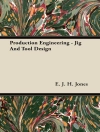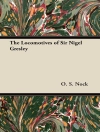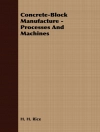It is undeniable that the recent revival of artificial intelligence (AI) has significantly changed the landscape of science in many application domains, ranging from health to defense and from conversational interfaces to autonomous cars. With terms such as “Google Home”, “Alexa”, and “Chat GPT” becoming household names, the pervasive societal impact of AI is clear. Advances in AI promise a revolution in our interaction with the physical world, a domain where computational intelligence has always been envisioned as a transformative force toward a better tomorrow. Depending on the application family, this domain is often referred to as Ubiquitous Computing, Cyber-Physical Computing, or the Internet of Things. The underlying vision is driven by the proliferation of cheap embedded computing hardware that can be integrated easily into myriads of everyday devices from consumer electronics, such as personal wearables and smart household appliances, to city infrastructure and industrial process control systems. One common trait across these applications is that the data that the application operates on come directly (typically via sensors) from the physical world. Thus, from the perspective of communication network infrastructure, the data originate at the network edge. From a performance standpoint, there is an argument to be made that such data should be processed at the point of collection. Hence, a need arises for Edge AI — a genre of AI where the inference, and sometimes even the training, are performed at the point of need, meaning at the edge where the data originate.
The book is broken down into three parts: core problems, distributed problems, and other cross-cutting issues. It explores the challenges arising in Edge AI contexts. Some of these challenges (such as neural network model reduction to fit resource-constrained hardware) are unique to the edge environment. They need a novel category of solutions that do not parallel more typical concerns in mainstream AI. Others are adaptations of mainstream AI challenges to the edge space. An example is overcoming the cost of data labeling. The labeling problem is pervasive, but its solution in the Io T application context is different from other contexts. This book is not a survey of the state of the art. With thousands of publications appearing in AI every year, such a survey is doomed to be incomplete on arrival. It is also not a comprehensive coverage of all the problems in the space of Edge AI. Different applications pose different challenges, and a more comprehensive coverage should be more application specific. Instead, this book covers some of the more endemic challenges across the range of Io T/CPS applications. To offer coverage in some depth, we opt to cover mainly one or a few representative solutions for each of these endemic challenges in sufficient detail, rather that broadly touching on all relevant prior work. The underlying philosophy is one of illustrating by example. The solutions are curated to offer insight into a way of thinking that characterizes Edge AI research and distinguishes its solutions from their more mainstream counterparts.
Jadual kandungan
Part I: Core Problems.- Chapter 1: Neural Network Models for Time Series Data.- Chapter 2: Self-Supervised Learning from Unlabeled Io T Data.- Chapter 3: On the Generalization Power of Overfitted Two-Layer Neural Tangent Kernel Models.- Chapter 4: Out of Distribution Detection.- Chapter 5: Model Compression for Edge Computing.- Part II: Distributed Problems.- Chapter 6: Communication Efficient Distributed Learning.- Chapter 7: Coreset-based Data Reduction for Machine Learning at the Edge.- Chapter 8: Lightweight Collaborative Perception at the Edge.- Chapter 9: Dynamic Placement of Services at the Edge.- Chapter 10: Joint Service Placement and Request Scheduling at the Edge.- Part III: Cross-cutting Thoughts.- Chapter 11: Criticality-based Data Segmentation and Resource Allocation in Machine Inference Pipelines.- Chapter 12: Model Operationalization at Edge Devices.
Mengenai Pengarang
Mudhakar Srivatsa received the Ph.D. degree in Computer Science from Georgia Tech. He is a distinguished engineer at the Automation and AI research department in IBM T. J. Watson Research Center. His work is focussed on cloud-native data and AI architectures for spatial and time series data. He is an IBM master inventor with over 100 granted US patents, over 100 refereed publications, a recipient of IBM corporate award, IBM Recognition Experience Honoree, outstanding technical achievement awards and research division awards. His co-led a global collaboration across research, product development and consulting organizations to develop Watson Core Spatial and Time series library has been adopted in multiple product offerings.
Tarek Abdelzaher received his Ph.D. degree in Computer Science and Engineering from the University of Michigan in 1999. He is presently a Sohaib and Sara Abbasi Professor of Computer Science and a Willett Faculty Scholarat the University of Illinois. Abdelzaher has over 300 refereed publications in Real-time Computing, Distributed Systems, Sensor Networks, and Io T, with more than 41, 000 citations according to Google Scholar, and an H-index of 96. He served as Editor-in-Chief of the Journal of Real-Time Systems for many years, and as an Associate Editor of multiple journals including IEEE TMC, IEEE TPDS, ACM To SN, ACM TIo T, and ACM To IT. He also chaired several top conferences in his field, including RTSS, Sensys, Infocom, ICDCS, IPSN, RTAS, DCo SS, EWSN, IWQo S, and ICAC. Abdelzaher received the IEEE Outstanding Technical Achievement and Leadership Award in Real-time Systems (2012), a Xerox Research Award (2011), and over a dozen best paper awards. He is a fellow of IEEE and ACM.
Ting He received the Ph.D. degree in Electrical and Computer Engineering from Cornell University. Dr. He is an Associate Professor in the School of Electrical Engineering and Computer Science at the Pennsylvania State University, University Park, PA. Her interests reside at the intersection of computer networking, distributed computing, and machine learning. Dr. He is a Senior Member of IEEE. She has served as Associate Editor for IEEE Transactions on Communications and IEEE/ACM Transactions on Networking, General Co-Chair of IEEE RTCSA, TPC Co-Chair of IEEE ICCCN, Area TPC Chair of IEEE INFOCOM, and TPC member of many international conferences on networking and distributed computing. She received multiple awards from IBM and International Technology Alliance (ITA) for technical contributions, and multiple best paper awards from IEEE Communications Society, IEEE ICDCS, ACM SIGMETRICS, and IEEE ICASSP.












